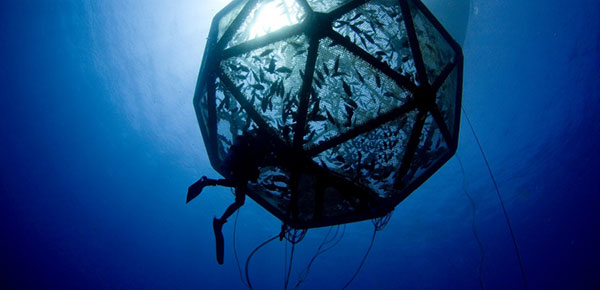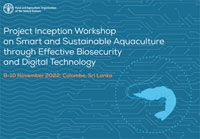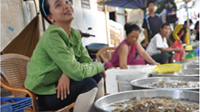Resources
Background
Aquaculture is a fast-growing but highly complex sector with many farmed species under many production systems and in different aquatic environments. This complexity can put a strain on shaping a more sustainable aquaculture system, as many issues may affect environmental and production effectiveness. To mention some, not proficient feed use, increasing waste products, impacting habitat with modifications and invasive species, along with biosecurity issues (diseases and genetic contamination): all concerns that limit sustainability.
Biosecurity is a key concept to prevent and control diseases and to maintain a good environment in aquaculture production systems.
Improving biosecurity will enable countries to grow more food efficiently, increase their incomes and, thus, improve their resilience, reduce their vulnerability and enhance their ability to respond to the impacts of higher food prices and other threats to food security.
Capacity building
Improving knowledge on disease preventive measures is a key and pro-active action for enabling a maturing and growing industry. The SAB project will endeavor a capacity building process, by undertaking a series of activities and steps which are fundamental ingredients to achieve the goal, through a 3-level intervention:
- governance dialogue (e.g. progressive risk-based management, networks and partnerships);
- prevention technologies (e.g. vaccines)
- innovation (e.g. application of smart and digital aquaculture technologies, public-private sector partnership in research)
The Fourth Industrial Revolution (or Industry 4.0) has been at the center of economic transformation for some years, making the concepts of innovation and digital transformation crucial components in present and future industry managements plans. Phasing of automation and intelligence into aquaculture production and the use of technological innovations such as smart communication devices, cloud storage and big data, information technology and artificial intelligence would enhance production and improve efficiency.
The Internet of things (IoT), a system of interrelated computing devices, can transfer data over a network without requiring human-to-human or human-to-computer interaction. Thus IoT is able to enhance farm management, production efficiency and could help aquaculture farmers to improve their working conditions. For example, aquaculture farms remotely located, can be monitored by using IoT, enhancing control efficiency. The captured data can be accessed anywhere, anytime, as long as the internet bandwidth is available at the site.
In this context, the Smart Aquaculture Biosecurity project will provide a robust approach that has the potential to improve knowledge on biosecurity monitoring and mitigation.
Relevant publications
Diseases of shrimp
Infectious myonecrosis
Shrimp infectious myonecrosis strategy manual
Acute Hepatopancreatic Necrosis Disease (AHPND)
Shrimp acute hepatopancreatic necrosis disease strategy manual




